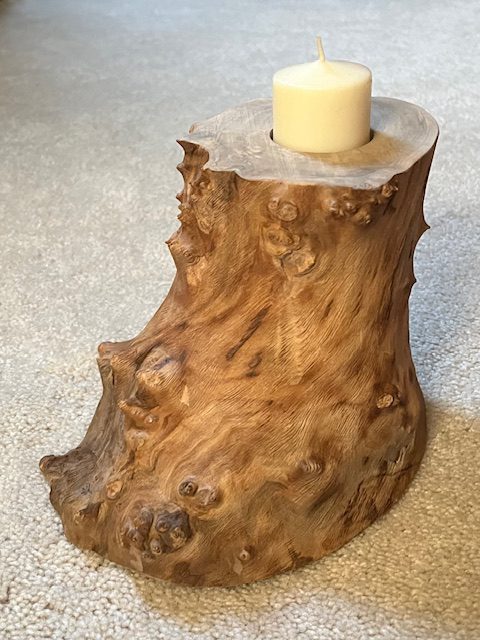
Wabi sabi is a Japanese idea that is hard translate to other cultures; but in essence it refers to an appreciation for the beauty in something old and worn or damaged and disintegrating. It recognizes imperfection and finds it somehow deeply satisfying. Examples might be a broken holly branch fallen onto snow or moss on old bricks or a saggy, inviting armchair.
Wabi Sabi: A Way of Seeing
The picture above is of a section of a downed tree. Its beauty even in decay is moving. Moss has begun to grow along the sweeping lines. It is almost musical. Some might pass by it without noticing it. Others might get snagged by its pleasing and fleeting imperfection.
I am not a true student of this Japanese idea. Nevertheless, when I see an offcut or a chunk of forgotten wood, I often find I enter a wabi sabi mode. What might this thing be with little intervention on my part?
Letting Broken Beauty Speak for Itself
Here is an offcut of sweet gum that, with debarking and a bit of sanding across the cut, became a sort of as-found candle holder.

I had a piece of cracked wild cherry was forgotten for nearly half a century. It had hardened over the years into a dense chunk indeed. But I sawed it into two pieces. The halves each needed only three drill-pressed holes and a quick sanding on their tops to become statement candle blocks.
You could say, I guess, that such pieces are a cross between rescuing wood (which I enjoy very much) https://thelindenwoodstudio.com/giving-wood-a-second-chance/ and true wabi sabi practice. A good discussion of that practice and its history is here: What is Wabi Sabi? The Elusive Beauty of Imperfection (japanobjects.com) The article also touches on kintsugi, but I’m keeping that idea for another time.
